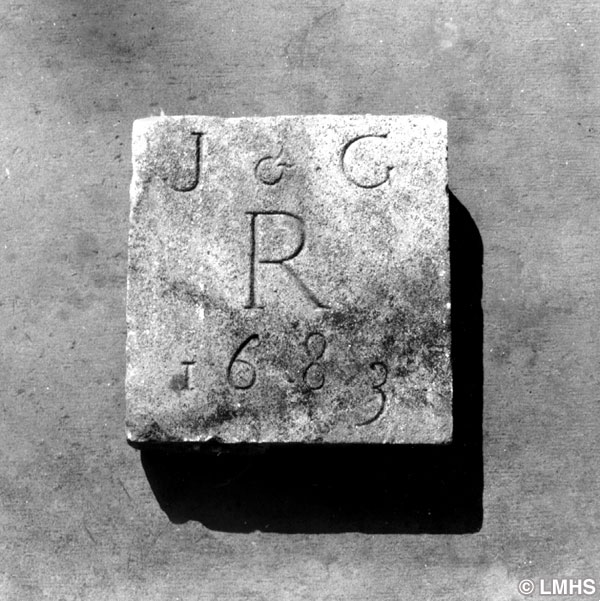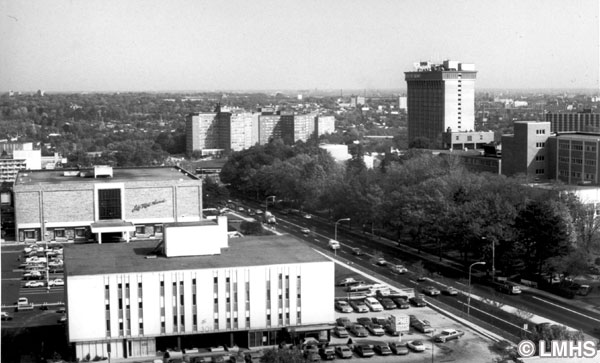John Roberts Of Pencoyd
John Roberts of Pencoyd came to the area of Pennsylvania called Merion in 1683. He married a fellow passenger from the ship Morning Star, built a stone home, sired children and founded a dynasty in Lower Merion which produced, among other things, a model dairy farm, an iron works, many civic leaders, a physician, a president of the Pennsylvania Railroad and a state senator. John Roberts (1648-1724) became a prominent man in the Welsh settlement of Merion. Because of his fine reputation, he was appointed Justice of the Peace. He was also elected to the Provincial Assembly in 1704. John called his farm Pencoid (his spelling) which means in Welsh “head of the woods,” an apt name because his large stone farm house was nestled at the top of the rise of land from the Schuylkill River, just about where Saks Fifth Avenue is now on City Avenue.
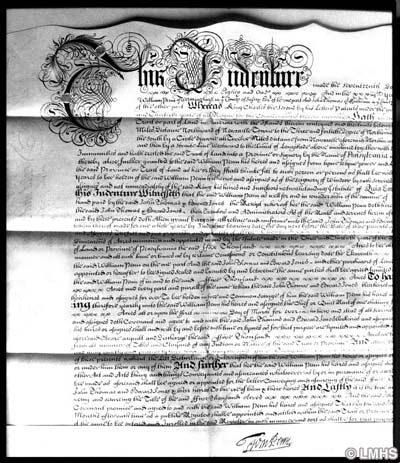
It was in November of 1683 that John Roberts disembarked from the sailing ship Morning Star…near the new community of Philadelphia. John was pleased to discover well-timbered land, a clear spring, plenty of stone for building and soil which was “good and fat.”
The following spring, having cleared his land to build a house, John married Gaynor Roberts, who had also purchased ground. They began building a permanent home with the aid of hired carpenters and masons from Philadelphia. The marriage of John and Gaynor in January 1684, was the first such ceremony at the Merion Friends Meeting.
The Pencoyd Farm
The initial crops at Pencoyd were grains: wheat, Indian corn and the principal crop, barley. John Roberts was labelled malster in early records, a grower of barley from which malt is made. John’s life was a rich one…he had found freedom and a place to establish a family without the horrors of his homeland where frequent jailings and fines were imposed upon those who wished to be Quakers.
A Heritage Passed
At the end of his successful life, John left the farm to his only son, Robert, who was 40 at the time of his inheritance. By that time, Philadelphia had grown to be a major economic power, second only to London. Robert Roberts, a trustee of Merion Meeting, was known throughout the community as an honest, intelligent man.
He had been operating a ferry which served as a direct connection to the markets of Philadelphia, as well as keeping an active interest in the farming on his property. Philadelphia’s burgeoning population created a greater need for food and, as a result, Roberts abandoned the major crop, barley, in favor of raising beef, suckling pigs, vegetables, butter and eggs.
Surveyor Roberts’ Legacy
With expanded use, the property had grown to 180 self-sufficient acres and was passed on to Roberts’ son, John Roberts II, known as “the surveyor.” Young John had been surveying neighbors’ property lines from the time he was a teenager. With his gift for mathematics, he had been put to work early in life laying out roads and establishing the boundary rights of neighboring land owners. John II married Rebecca Jones with whom he had 12 children.
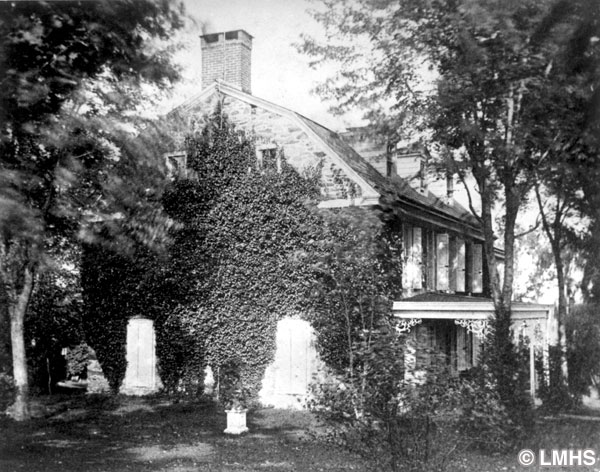
John and Rebecca’s first son, Jonathan, not being interested in farming, became instead a physician and relocated to Kent Island, Maryland. Jonathan’s letters home to his parents at Pencoyd give charming and valuable insights into mid 18th century life. John, the surveyor, died January 13, 1776, not living quite long enough to witness the break with England.
Two Brothers Rebel
However, son Robert Roberts, (the ninth child of John II and Rebecca), and his brother Algernon (the tenth child), went against their Quaker upbringing and trained to fight in the upcoming conflict. Robert was read out of Merion Meeting on January 26, 1776 for his warlike activities. It is assumed that Algernon met the same fate at Meeting as his brother, although documentation is lacking on Algernon’s behavior.
Aside from the impending war, another major problem facing the farm was the depletion of nutrients in the soil which had seemed so rich to the first John Roberts. Two and a half generations of heavy farming had taken their toll. A friend of the Roberts family, Richard Peters, whose Belmont mansion still stands today in historic Fairmount Park, is credited with introducing the use of gypsum (or “land plaster”) to the soil. Peters shared his technique of regenerating the soil with the Roberts family.
At the death of John, the surveyor, son Algernon became the fourth proprietor of Pencoyd. While serving in the army with his brother Robert, Algernon achieved the rank of Lieutenant Colonel of the Seventh Battalion under the command of his future father-in-law, Colonel Isaac Warner. In 1778, he took an oath of allegience to his country which further estranged him from his Quaker roots.
The Revolutionary Years
During the British occupation of Philadelphia in 1777, all farms nearby the city, including Pencoyd, were raided for food. The British often paid in gold for the goods but the patriots often did not. Algernon complained to the Governor about the patriots stealing fruit and vegetables.
After the war, Algernon became a member of Richard Peters’ new Philadelphia Society for Promoting Agriculture. By this time, he had changed the focus of the farm once again, concentrating on dairy farming. Algernon provided butter and beef to his main market, Philadelphia. Always an active farmer, he continued to further the cause of farming by writing and spreading the word about new methods and techniques. President Washington, also a good friend of Richard Peters, visited Belmont frequently, so it is quite possible (but not documented) that Algernon Roberts was part of farming conversations which took place at Belmont when the President visited.
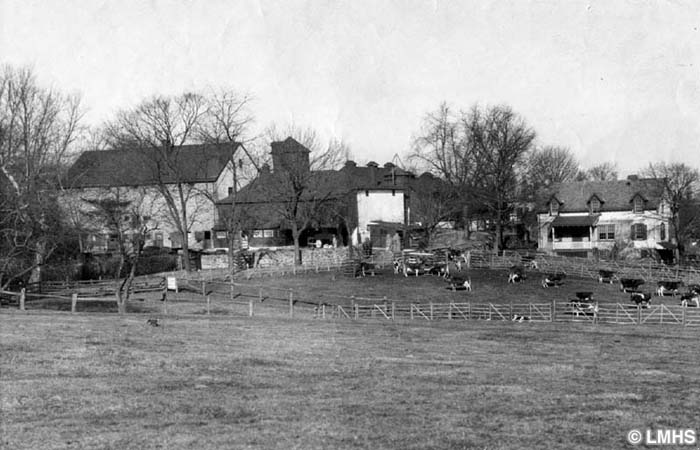
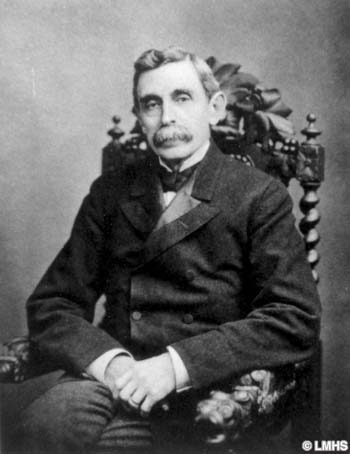
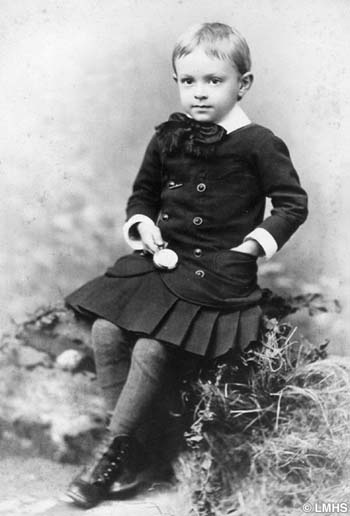

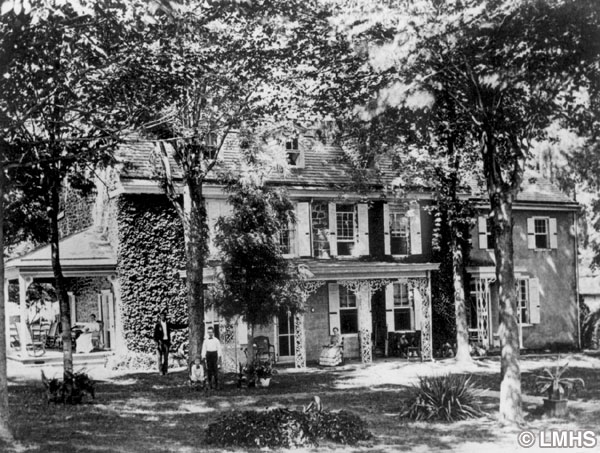
Isaac Furthers Agriculture
Algernon reigned as head of Pencoyd for 40 years. When he died in 1815, it was written “none will be more regretted, and few so much missed.” His son, Isaac Warner Roberts, took charge of the farm next, promoting many progressive techniques for furthering agriculture and dairying. Isaac’s first wife, Emily Thomas, died fairly young after having four daughters. Isaac’s second wife, Rosalinda Evans Brooke, bore him two sons, Algernon and George Brooke Roberts.
Isaac enlarged the house with the addition of a large stone wing and maintained the farm successfully for 44 years. However, when Isaac Warner Roberts died, neither George Brooke nor Algernon wished to be farmers in the family tradition. George had graduated from Rensselaer Polytechnic Institute with a degree in civil engineering and a keen interest in railroading. Algernon was drawn to the iron industry which he wished to pursue with his cousin, Percival Roberts. Because both sons were occupied “off the farm,” the business of Pencoyd was now managed by their mother, Rosalinda Roberts.
George and Sarah
George pursued and won the hand of Sarah Brinton, whom he married in 1868. Soon after returning from their wedding trip, George’s brother Algernon died of a serious infection caused by the lancing of a carbuncle. George was now the new proprietor-to-be of Pencoyd, since his mother, Rosalinda, was still in charge of the farm. When Rosalinda died in 1873, George became the true inheritor and proprietor of the property. George’s young bride, Sarah (lovingly called “Sallie”), died in 1869 after giving birth to a son, George Brinton Roberts.
The Railroad Years
George Brooke Roberts married a second time. His new wife, Miriam Pyle Williams, a descendant of both Dr. Thomas Wynne and Dr. Edward Jones, bore him five children. The year of his second marriage saw George’s elevation to the position of first vice president of the Pennsylvania Railroad and in 1880 he was elected president. Although not a farmer, George always kept up with the farming business, using the old homestead as a summer home for his family. In the 1890s, he had the farm wired for electricity, “a modern innovation.”‘
George was hailed as one of the finest businessmen ever to live, being fair and just in all his dealings. His fairness extended to his family as well as business. His will stipulated that each of his children should share in the ownership of Pencoyd so that each could have a house of his/her own. However, all the children were still living in the main house at Pencoyd.

It was some years later that the siblings decided that the third son, T. Williams Roberts, should be the seventh proprietor of Pencoyd. When T. Williams finally took over the running of the farm, he and his brother, Isaac Warner Roberts, decided to establish a herd of Guernsey dairy cattle. In time, they built up the second best producing record in the United States. Their brother, Algernon, became a member of the Pennsylvania Senate but unfortunately developed tuberculosis and died at the age of 34.

Pencoyd in a Time Warp
T. Williams oversaw many changes at Pencoyd. There were new stone chimneys, porches were removed, the entrance was redesigned. Another generation grew up in or near the old farm. However, the time was fast approaching when the growth of the city and suburbs, the demand for housing and new commercial ventures proved too much for the family to endure.
T. Williams’ children had to make the painful decision to sell the farm to a developer. Moving the house away from the commercialism was considered but the cost was prohibitive. The peaceful farm atmosphere was already lost to development along City Avenue. Peace and quiet would never surround the old farmhouse again. Pencoyd is now a memory…but what a wonderful memory it is!

